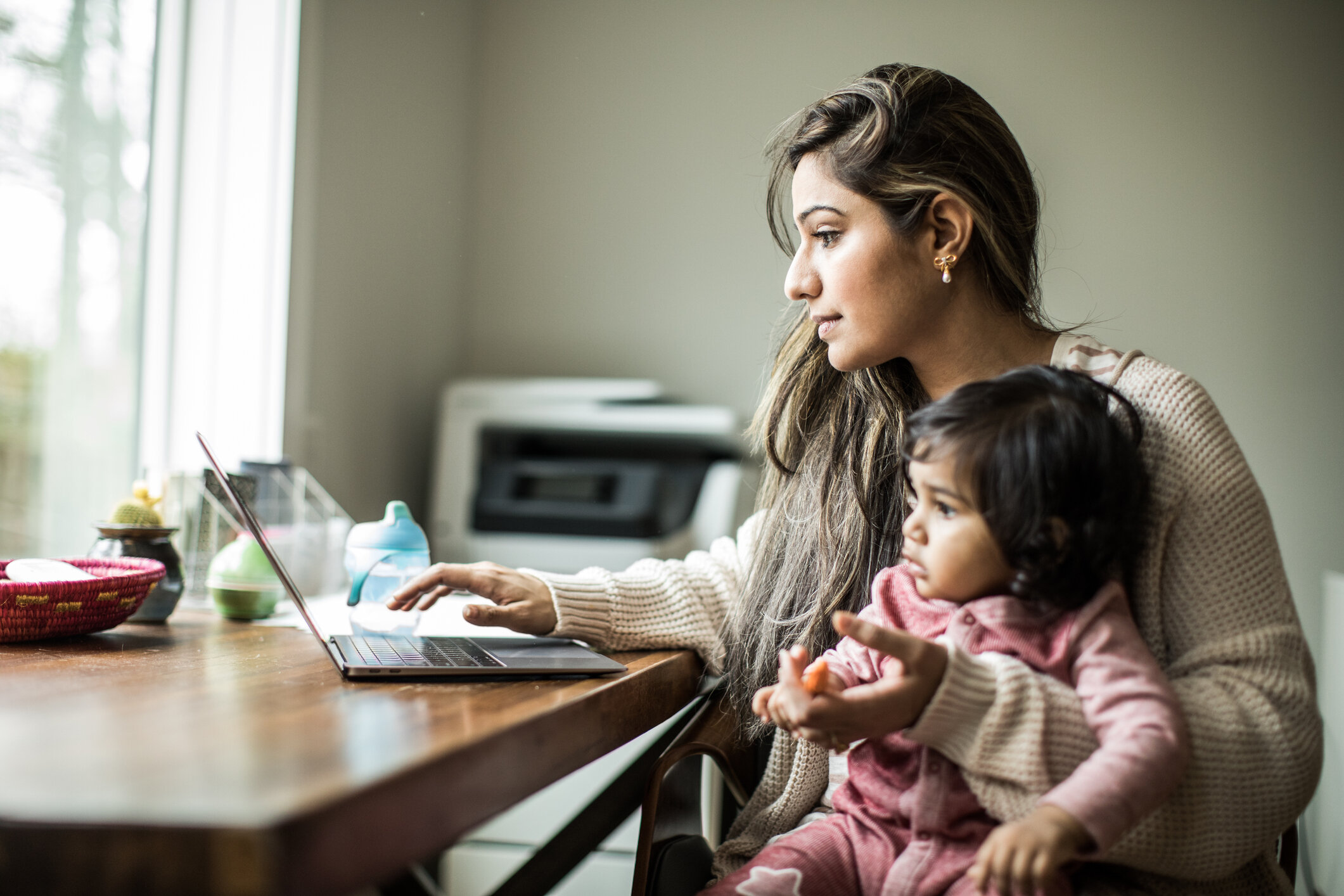If you’re one of the many people across the world working from home right now, you may be experiencing some challenges. Keeping focus, staying connected, and handling isolation are all new and challenging tasks that many struggle with. Even worse, if you’re not comfortable working from home, it can feel impossible to get anything done. We’ve been there. There are steps you can take to increase the comfort of your home workspace, without buying tons of expensive office furniture or accessories, to get you back in business in no time.
Set Your Workspace Up for Success
It all starts here. Your workspace is where you’ll be spending most of your workday, so tweaking it for maximum comfort is key. To start, you probably don’t have an office chair at home – and you don’t need one! Any chair can be made more comfortable with the addition of the thin pillow to sit on, and/or a lumbar support pillow for your back. If a lumbar pillow is too much or your chair is too small, even a towel or sweater draped over the back of your chair will give you softness and cushion a dining room or kitchen chair may be lacking.
Once your seat is comfy, next comes the surface you’ll be working at. If you have a desk – great! If you’re using a counter or other table as your surface, that will work just as well as long as it serves for the function of working during the day. This means no crowded plates or paper to get in your way or distract you while working. A cluttered work area gives you less space to move and can feel constricting, reminding you that you’re not in your usual work setting. Keeping your workspace free of clutter and distracting objects will put you at ease and help you get more done.
Light the Way
You may be glad to get away from the fluorescent lights of an office building, but that doesn’t mean your lighting at home is much better. Natural light is best, as its calming and not too harsh. If you can position yourself near a window that gets lots of light without glare, that’s ideal. If not, a table lamp will do just fine. A good range of light for a lamp would be somewhere between soft enough to light your space so you’re not in a dark corner, but not brighter than your computer screen. You should be able to take notes and read easily in a medium-dim glow.
Take Breaks
Since you’re at home, it may feel like you don’t need to take a break. This is untrue! If you’re working, you deserve to take as many breaks as you would in your regular workday. This means leaving your workspace for lunch, stretch breaks, and fresh air. It can be easy to overlap your work time with personal time when you’re doing it all out of the same space, so set alarms to alert you when it’s time for lunch or when you need to stretch. Most likely, your body will tell you before an alarm will!
Set Work Hours
Just like taking breaks, setting boundaries for work hours when you’re always at home is important. If you have a lot to do, it’s easy to work 12-hour days, every day. But if you wouldn’t do it in your office, don’t do it at home. Have a hard stop time and start finishing up what you’re working on when you get close. Whether that’s 5pm, 6pm, or another work schedule, stick to it. And once you’re off, be off. Turn off your computer, silence your phone notifications for apps you use for work, and don’t keep working while watching evening TV or eating dinner. This can help with the “always on” feeling many have while they work from home and will keep certain areas of your home (living room, bedroom) classed as personal areas, and not workspaces.
Dress It Up (if you want!)
If you want to work in your pajamas – do it! Wearing loungewear is definitely a great way to stay comfortable while working from home, especially in times of stress and uncertainty. Keep it professional if you need to be on video calls where you’ll be seen, but otherwise, the choice is up to you. On the other hand, many people find themselves more productive and able to split the day between work time and chill time by still getting dressed as they would for work. Wearing a full suit at your home desk may be pushing it, but showering and putting on a shirt and some jeans can tell your brain it’s work time and signal it’s time to relax when you change back into your comfy clothes once you sign off. Whatever you decide, much like in the real office what you wear has a big impact on how comfortable you feel and how much work you’re able to get done.
Working at home may not be ideal for many people, but you can still be productive and do a great job while working in a setting you’re not used to. A clean and designated work-only space will preserve that precious work/life balance, and keeping your body healthy and happy with breaks, stretches, and comfortable clothing will help you relax and focus. Once you master this, you may find yourself preferring your work from home set-up to the office. And if not, at least there’s no traffic.





